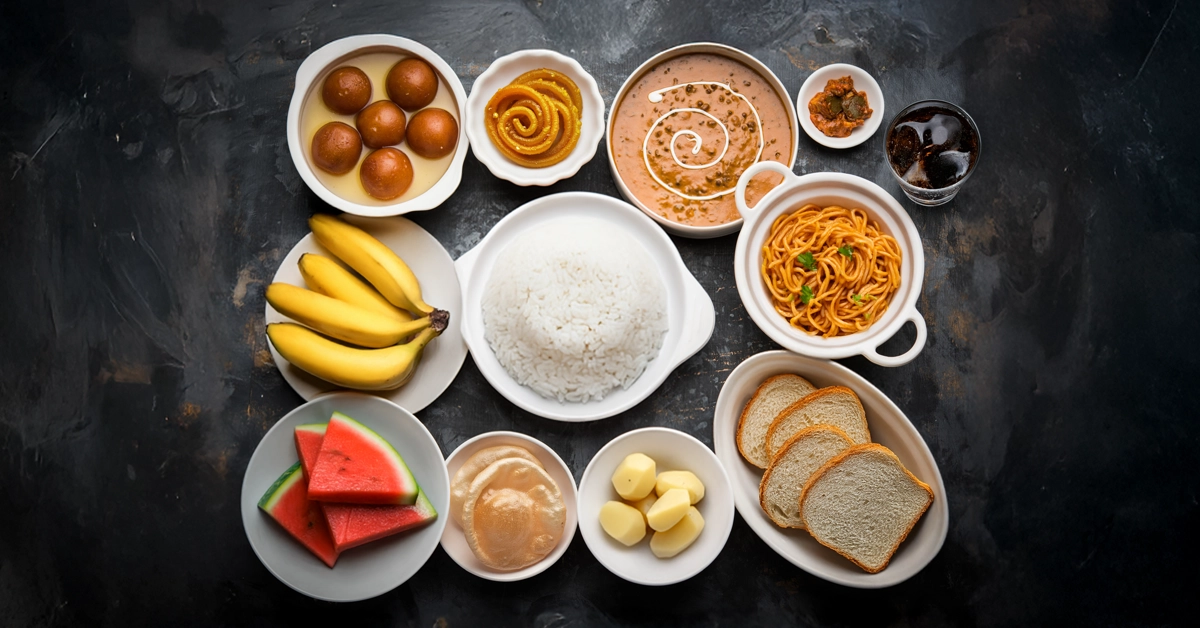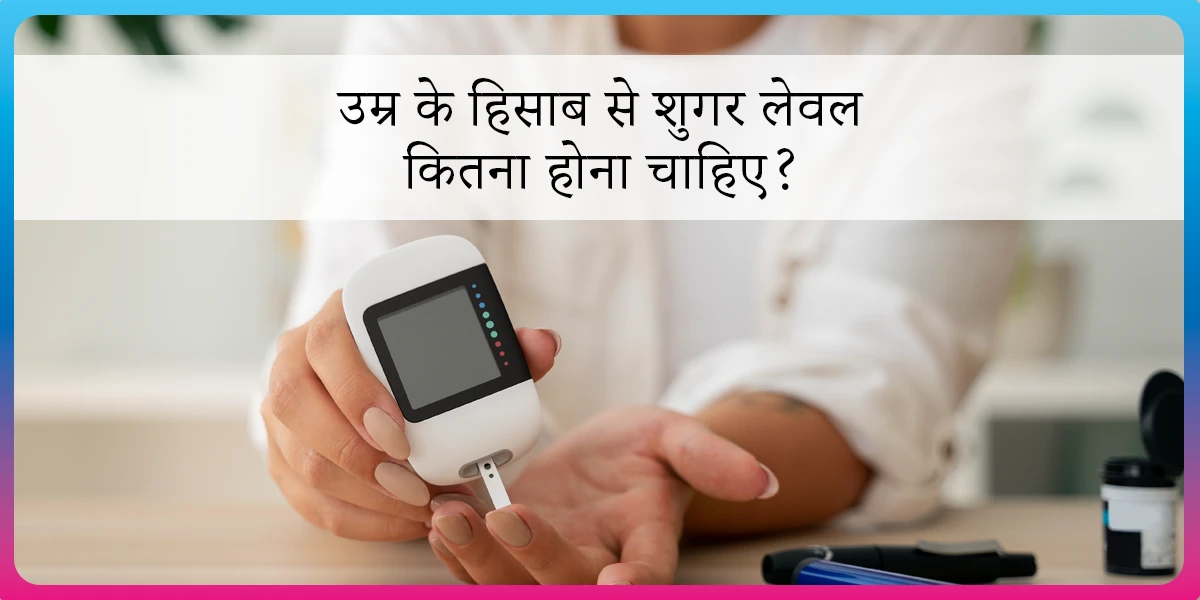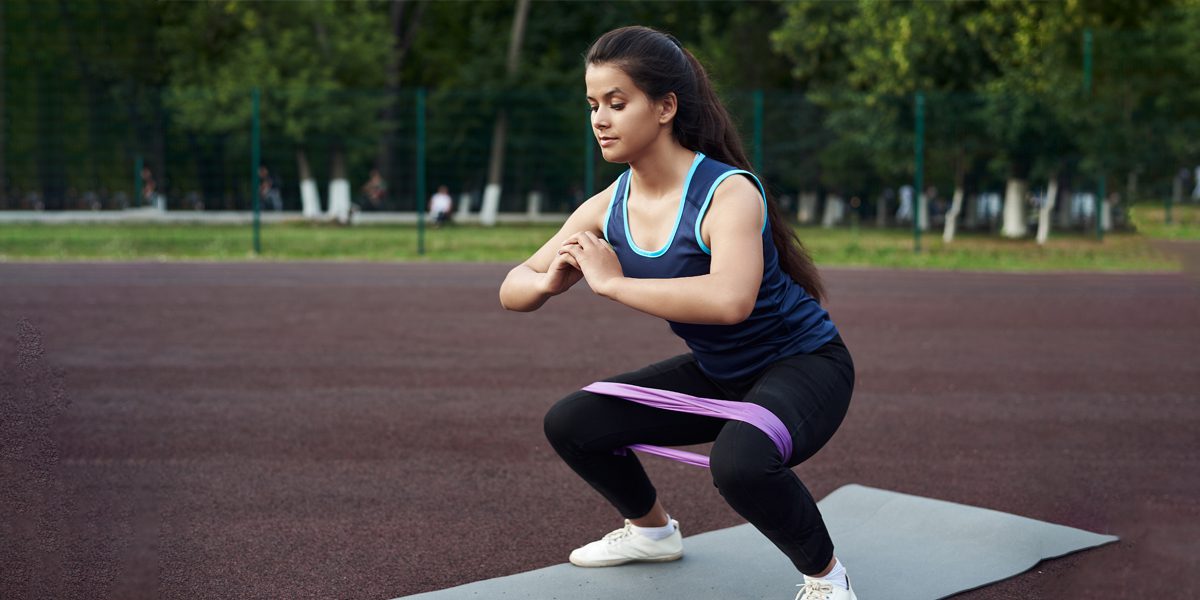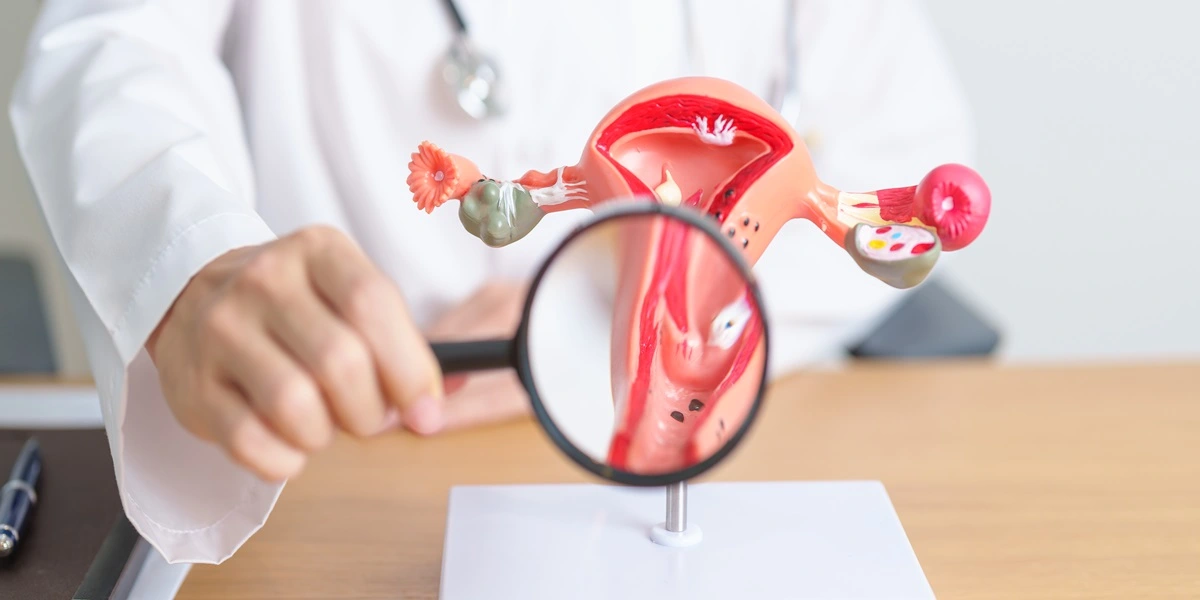Foods with High Glycemic Index: What to Eat and Avoid for Better Blood Sugar Control

Have you ever noticed how a gulab jamun fills you up for a bit but leaves you hungry again in just a couple of hours? And to be very honest, it’s almost impossible to stop at just one! On the other hand, foods like bajra bhakri with chana masala keep you feeling satisfied for much longer without the urge to keep digging in or having more & more.
So, what’s the difference? Why does this happen? The answer lies in something called the Glycemic Index!
In this blog, we’ll tell you what the Glycemic Index is and why it’s so important when managing diabetes.
What is the Glycemic Index (GI)?
Glycemic Index (GI) is a ranking system that classifies carbohydrates present in a food item on a scale from 0 to 100 based on how quickly they raise your blood sugar levels after you eat them.
So,
- High GI foods (70 and above) are rapidly digested and absorbed, causing a sharp spike in blood sugar levels.
- Moderate GI foods (56-69) have a balanced impact, leading to a moderate rise in blood sugar.
- Low GI foods (55 and below) are digested slowly, releasing sugar gradually and helping prevent blood sugar spikes.
For people with diabetes, weight concerns, or metabolic conditions like PCOS, consuming low to moderate GI foods can be beneficial in maintaining stable blood sugar levels and overall health.
What Happens When You Consume High GI Foods?
Consuming high-GI foods can cause rapid fluctuations in blood sugar levels, leading to:
- Sudden energy crashes after an initial spike.
- Increased hunger soon after eating, leading to overeating.
- Weight gain due to the urge to eat very often.
- Higher risk of insulin resistance, which is a precursor to type 2 diabetes.
Choosing low to moderate GI foods can help you stay fuller for longer, avoid sugar crashes, and maintain better energy levels throughout the day.
GI, diet choices, and so much info all around can be overwhelming! But that’s where our expert nutritionists can help clear things up. Book a 1-on-1 online consultation, get personalized advice, and feel confident in your food choices. Many have found clarity – now it’s your turn
What Affects the GI of Foods?
The GI value of a food item is affected by several factors, including:
- Fiber Content: High-fiber foods, such as whole grains and legumes, reduce sugar spikes by slowing digestion.
- Fat and Protein Content: Foods high in protein and fat, like nuts or dairy, slow down carbohydrate absorption, leading to a lower GI. Also, adding ghee or curd to your meal can slow down sugar absorption, lowering the meal’s overall GI.
- Types of Sugar and Starches: Simple sugars (like honey, sugar, jaggery) and certain starches raise blood sugar. Amylopectin-rich starches like maida, white rice, and sabudana digest quickly, which causes sugar spikes. In contrast, amylose-rich starches in millets, brown rice, and whole wheat digest slowly, offering better sugar control.
- Anti-nutrients: Certain foods contain substances like phytates and tannins, which can affect nutrient absorption and digestion, indirectly influencing the GI of a meal.
- Ripeness: A ripe banana has a higher GI than a raw one because the starches convert to sugars.
- Physical Form: Whole fruits have a lower GI than fruit juices since fiber slows sugar absorption.
- Processing: Whole wheat flour has a lower GI than maida, and refined foods generally have a higher GI.
- Cooking methods: The cooking method can transform the same food from low GI to medium GI or high GI. Overcooked rice or potatoes have a higher GI compared to when they are lightly cooked.
| Did you know?💡
Cooling and reheating rice or roti can lower its GI! Yes! This process creates resistant starch, which slows sugar release. So, it’s great to have last night’s rice or roti – just reheat it and have 😁 |
How Our Cooking Methods Can Impact GI?
Preparing and cooking methods of our food can significantly alter the food’s GI. Let’s learn how else cooking can impact GI with the help of common examples:
1. Potatoes
Raw potatoes have a moderate GI. But, of course, no one eats raw potatoes.
In most of our Indian dishes, we typically boil it (dishes like masala dosa, bonda, vada pav etc), fry it, or rarely bake it. But actually boiling them raises their GI, and it becomes high GI as the heat breaks down the starches into simpler sugars.
Surprisingly, frying potatoes lowers their GI due to the fat from the oil slowing down digestion. While frying might lower the GI of potatoes, it’s important to be mindful of other factors that go into cooking, like oil and butter, to fry it, which can change its GI. That’s why just looking at the GI of food is not a smart way of deciding if it’s good for you.
2. Rice
The GI of rice varies with type and cooking method. Basmati rice, has a lower GI compared to other white rice types. Overcooking rice can increase its GI as it becomes softer and easier to digest. So simple – avoid overcooking it 😀
3. Milk vs. Ice Cream
Milk has a low to moderate GI. Surprisingly, despite its high sugar content, ice cream has a lower GI because of its fat content, which slows down sugar absorption.
| Is GI Really the Ultimate Food Judge?
So, ice cream and samosas have a “moderate” GI (yes, really!). Does that make them healthy? NO. because they’re loaded with unhealthy fats. Meanwhile, some high-GI foods like watermelon have a high GI but low GL(Glycemic Load) and are packed with good nutrients. So, GI is useful, but it’s not the ultimate truth about food. Be smart and look at the full nutritional value and how your food is prepared before eating or buying it! |
High Glycemic Index Indian Foods to Be Cautious Of
1. Grains & Cereals
| Food Item | GI Value |
| White Rice (Polished) | 79 (High) |
| Maida Roti/Naan | 70-75 (High) |
| Cornflakes | 81 (High) |
| Sabudana | 85 (High) |
2. Indian Fast Foods & Snacks
| Food Item | GI Value |
| Puri, Bhature | 75-90 (High) |
| Samosa | 65-70 (Medium-High) |
| Vada Pav | 75-80 (High) |
| Medu Vada | 70 (High) |
3. Indian Sweets & Desserts
| Food Item | GI Value |
| Jalebi | 95 (Very High) |
| Gulab Jamun | 82 (High) |
How to Reduce the GI of Your Meals?
- Pair with Protein & Fiber: Combine one high-GI food with various low-GI foods to balance the meal and mitigate the blood sugar spike. For example, pair white rice with dal and a bowl of vegetable salad and curd.
- Choose Low to Medium GI Foods: Opt for whole grains, legumes, and plenty of fresh fruits and vegetables. These foods are lower in GI and packed with essential nutrients.
- Read Labels: Pay attention to food labels‘ ingredients and nutritional information. Look for products with whole grains and fewer added sugars.
- Monitor Portion Sizes: Even low-GI foods can lead to weight gain and higher blood sugar if consumed in large quantities. Be mindful of portion sizes and total carbohydrate intake.
- Cook smartly: Choose steaming, boiling, air-frying or grilling over deep-frying. Avoid overcooking rice and potatoes to keep their GI lower.
- Use Traditional Ingredients: Add methi seeds, jeera, or ghee to lower the GI impact of meals.
So, understanding the glycemic index is about smart choices, not restrictions!
The goal is not to eliminate high-GI foods completely but to consume them in moderation and balance them with low-GI foods. Small changes like choosing whole grains, adding fiber, and modifying cooking methods can significantly improve blood sugar control, energy levels, and overall health.
So, the next time you plan your meals, keep the GI factor in mind and make choices that nourish your body the right way.
Got more questions? We are here to help!
How We At Fitterfly Can Help You?
At Fitterfly, our expert Nutrition Coaches can guide you on portion sizes, cooking methods, and healthier alternatives to keep your blood sugar in check. With personalised meal plans, you’ll learn how to enjoy foods without the blood sugar spikes.
Plus, our Fitness and Success Coaches support you in building a lifestyle that keeps diabetes under control – without feeling restricted.
Want to know how we can help you? Call us at 08068507599 and join 30,000+ people who’ve already found success with Fitterfly!
Reduced diabetes medications in 3 months


6.8%
Happy members
EMI
Guarantee
4.8/5
Diabetes Prime Program
This blog provides general information for educational and informational purposes only and shouldn't be seen as professional advice.
Frequently Asked Questions
Should you eat high-GI foods before exercise?
Eating high-GI foods before working out can give a quick energy boost. However, they might not be ideal for everyone, as they can cause blood sugar levels to spike and drop quickly, leading to possible energy crashes.
What are the best high glycemic carbs for pre-workout?
Good pre-workout high glycemic carbs include: Bananas, Dry fruits like dates, raisins, etc, and a small serving of white rice
Do high-GI foods give you energy?
Yes, they do! But it's like a sprint, not a marathon. You'll get a quick burst, but it might not last long.
What are high glycemic foods for the gym?
For those looking for a quick energy boost at the gym, high-GI foods can be helpful. These include: Sports drinks, Energy bars, Raisins, and White bread sandwiches
What food has the highest glycemic index?
Pure glucose has the highest glycemic index (GI) of 100. Like pure glucose, there are two glycemic index scales - one compared to glucose and another compared to white bread. Highly processed foods rich in refined sugars tend to have the highest GI. Among commonly eaten foods, white bread puffed rice, and processed cereals like cornflakes have a high GI, meaning they can cause a rapid rise in blood sugar levels.
Is high GI good or bad?
High-GI foods provide quick energy, which can be beneficial in managing low blood sugar. However, frequent consumption of high-GI foods may lead to blood sugar spikes and crashes, potentially increasing the risk of insulin resistance over time. This is not recommended for people managing diabetes or those looking to maintain steady energy levels.
Which vegetable has a high glycemic index?
Starchy vegetables like potatoes (GI: 80-90 when boiled), sweet corn (GI: 55-60), and pumpkin (GI: 75) have higher glycemic indexes compared to leafy greens and non-starchy vegetables.
Which fruit is highest in sugar?
Fruits naturally contain sugar, but some have higher sugar content than others. Mangoes, grapes, lychees, sugarcane and bananas tend to have higher sugar levels, though they also provide essential nutrients and fiber, which can moderate blood sugar impact.






















